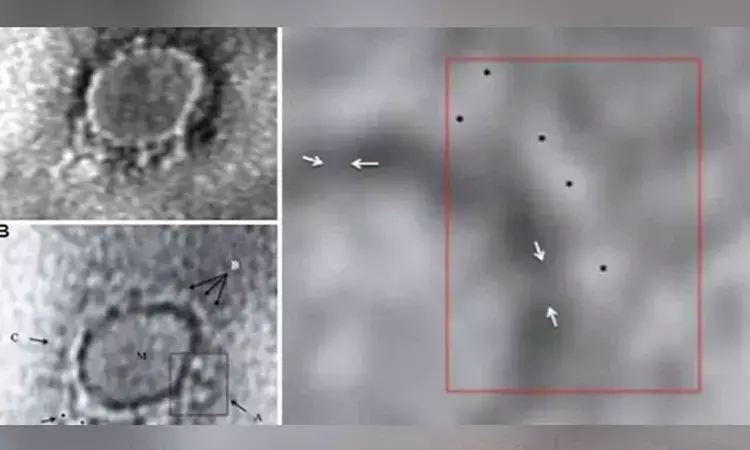- Home
- Medical news & Guidelines
- Anesthesiology
- Cardiology and CTVS
- Critical Care
- Dentistry
- Dermatology
- Diabetes and Endocrinology
- ENT
- Gastroenterology
- Medicine
- Nephrology
- Neurology
- Obstretics-Gynaecology
- Oncology
- Ophthalmology
- Orthopaedics
- Pediatrics-Neonatology
- Psychiatry
- Pulmonology
- Radiology
- Surgery
- Urology
- Laboratory Medicine
- Diet
- Nursing
- Paramedical
- Physiotherapy
- Health news
- Fact Check
- Bone Health Fact Check
- Brain Health Fact Check
- Cancer Related Fact Check
- Child Care Fact Check
- Dental and oral health fact check
- Diabetes and metabolic health fact check
- Diet and Nutrition Fact Check
- Eye and ENT Care Fact Check
- Fitness fact check
- Gut health fact check
- Heart health fact check
- Kidney health fact check
- Medical education fact check
- Men's health fact check
- Respiratory fact check
- Skin and hair care fact check
- Vaccine and Immunization fact check
- Women's health fact check
- AYUSH
- State News
- Andaman and Nicobar Islands
- Andhra Pradesh
- Arunachal Pradesh
- Assam
- Bihar
- Chandigarh
- Chattisgarh
- Dadra and Nagar Haveli
- Daman and Diu
- Delhi
- Goa
- Gujarat
- Haryana
- Himachal Pradesh
- Jammu & Kashmir
- Jharkhand
- Karnataka
- Kerala
- Ladakh
- Lakshadweep
- Madhya Pradesh
- Maharashtra
- Manipur
- Meghalaya
- Mizoram
- Nagaland
- Odisha
- Puducherry
- Punjab
- Rajasthan
- Sikkim
- Tamil Nadu
- Telangana
- Tripura
- Uttar Pradesh
- Uttrakhand
- West Bengal
- Medical Education
- Industry
What Coronavirus looks under Electron Microscope: ICMR scientists release images
 Image Source: ANI
Image Source: ANICoronavirus have a crown-like appearance and these spikes on the surface give this virus family its name, as corona means crown in Latin
Pune: Scientists at ICMR have now revealed the first set of images to show what the coronavirus looks like under the microscope. The images have been captured using a transmission electron microscope and have been published in the Indian Journal of Medical Research.
The images of the coronavirus have been taken by a team of ICMR-NIV scientists in Pune.
The images of Sars-Cov-2, the virus that causes COVID-19, are from the throat swab of the first laboratory confirmed case in India reported on January 30. The woman, among three students studying medicine in Wuhan in China, was diagnosed with COVID-19 after returning to India.
The gene sequencing of the samples from Kerala done at the National Institute of Virology (NIV) in Pune found that the virus was a 99.98 per cent match with the virus in Wuhan.
The image revealed the presence of stalk-like projections ending in round structures typical of a coronavirus particle.
"In summary, to the best of our knowledge, this is the first report from India detecting the SARS-CoV-2 virus using TEM directly in a throat swab specimen confirmed by PCR..." the study said.
The article titled "Transmission electron microscopy imaging of SARS-CoV-2" has been authored by the ICMR-NIV National Influenza Centre Team. The authors include Atanu Basu, deputy director and head of electron microscopy and pathology at NIV Pune.
According to the article, one particular virus particle was very well preserved, showing features very typical of coronaviruses. These bind only to certain receptors on the host cell.
According to the study, the description of a novel human coronavirus, initially referred to as the Wuhan coronavirus (CoV), is currently designated as severe acute respiratory syndrome (SARS)-CoV-2 as per the latest International Committee on Taxonomy of Viruses (ICTV) classification. It is probably the most recent human pneumonia virus with high outbreak potential.
This novel virus was initially identified through next-generation sequencing (NGS) and was suggested to have a possible zoonotic origin. Till date, detailed morphology and ultrastructure of this virus remains incompletely understood.
Hina Zahid Joined Medical Dialogue in 2017 with a passion to work as a Reporter. She coordinates with various national and international journals and association and covers all the stories related to Medical guidelines, Medical Journals, rare medical surgeries as well as all the updates in the medical field. Email: editorial@medicaldialogues.in. Contact no. 011-43720751
Dr Kamal Kant Kohli-MBBS, DTCD- a chest specialist with more than 30 years of practice and a flair for writing clinical articles, Dr Kamal Kant Kohli joined Medical Dialogues as a Chief Editor of Medical News. Besides writing articles, as an editor, he proofreads and verifies all the medical content published on Medical Dialogues including those coming from journals, studies,medical conferences,guidelines etc. Email: drkohli@medicaldialogues.in. Contact no. 011-43720751


